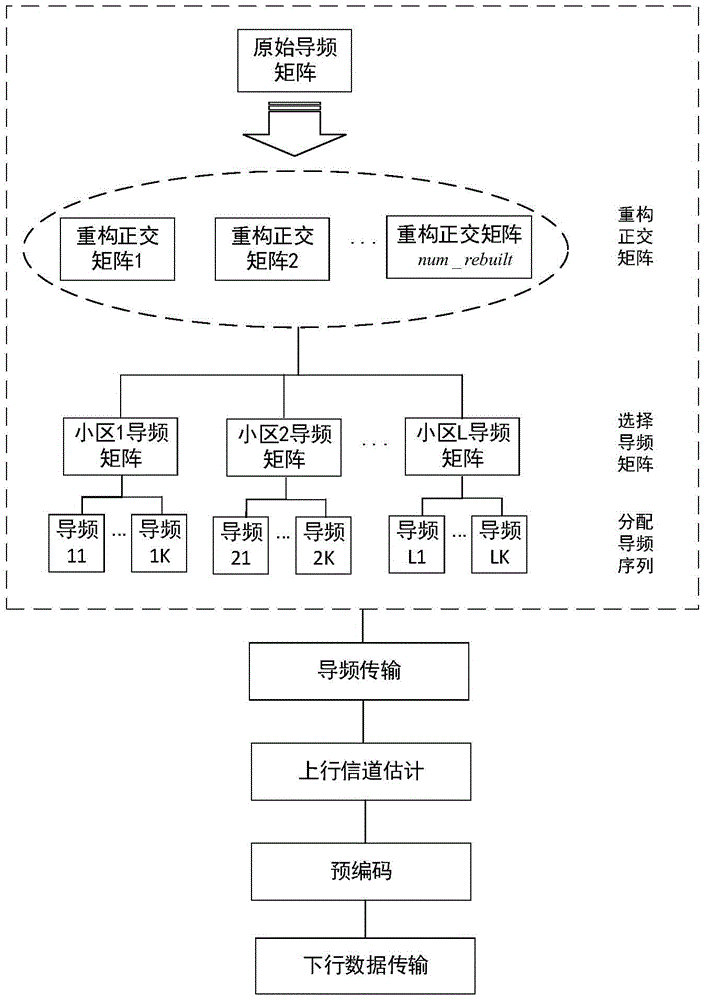Pilot sequence allocation method in massive multiple-input multiple-output system
A pilot sequence, multi-input technology, applied in the direction of pilot signal distribution, transmission system, digital transmission system, etc., can solve the problems of high complexity and cost, and achieve the effect of low operation complexity and good signal-to-interference-noise ratio
- Summary
- Abstract
- Description
- Claims
- Application Information
AI Technical Summary
Problems solved by technology
Method used
Image
Examples
Embodiment Construction
[0025] The present invention will be described in detail below with reference to the drawings and specific embodiments.
[0026] figure 1 It shows a schematic diagram of the cell structure and channels using MassiveMIMO. In the figure, the base station name corresponds to the cell name, and the uplink channel vector from user k in cell i to the base station in cell l is denoted as g ikl = Β ikl ·H ikl , Where β ikl Indicates the large-scale fading factor, h ikl Represents the small-scale fading vector. Unlike ordinary MIMO, in Massive MIMO, when the number of base station antennas M tends to infinity, the channels of different users in massive multi-antennas tend to be orthogonal (whether to the same base station or the channels of different base stations). The channels from a user to different base stations also tend to be orthogonal. In other words, if the two channel vectors versus The subscripts of are not exactly the same, i.e. (j 1 , K 1 , L j )≠(j 2 , K 2 , L 2 ), ...
PUM
 Login to View More
Login to View More Abstract
Description
Claims
Application Information
 Login to View More
Login to View More - R&D
- Intellectual Property
- Life Sciences
- Materials
- Tech Scout
- Unparalleled Data Quality
- Higher Quality Content
- 60% Fewer Hallucinations
Browse by: Latest US Patents, China's latest patents, Technical Efficacy Thesaurus, Application Domain, Technology Topic, Popular Technical Reports.
© 2025 PatSnap. All rights reserved.Legal|Privacy policy|Modern Slavery Act Transparency Statement|Sitemap|About US| Contact US: help@patsnap.com



